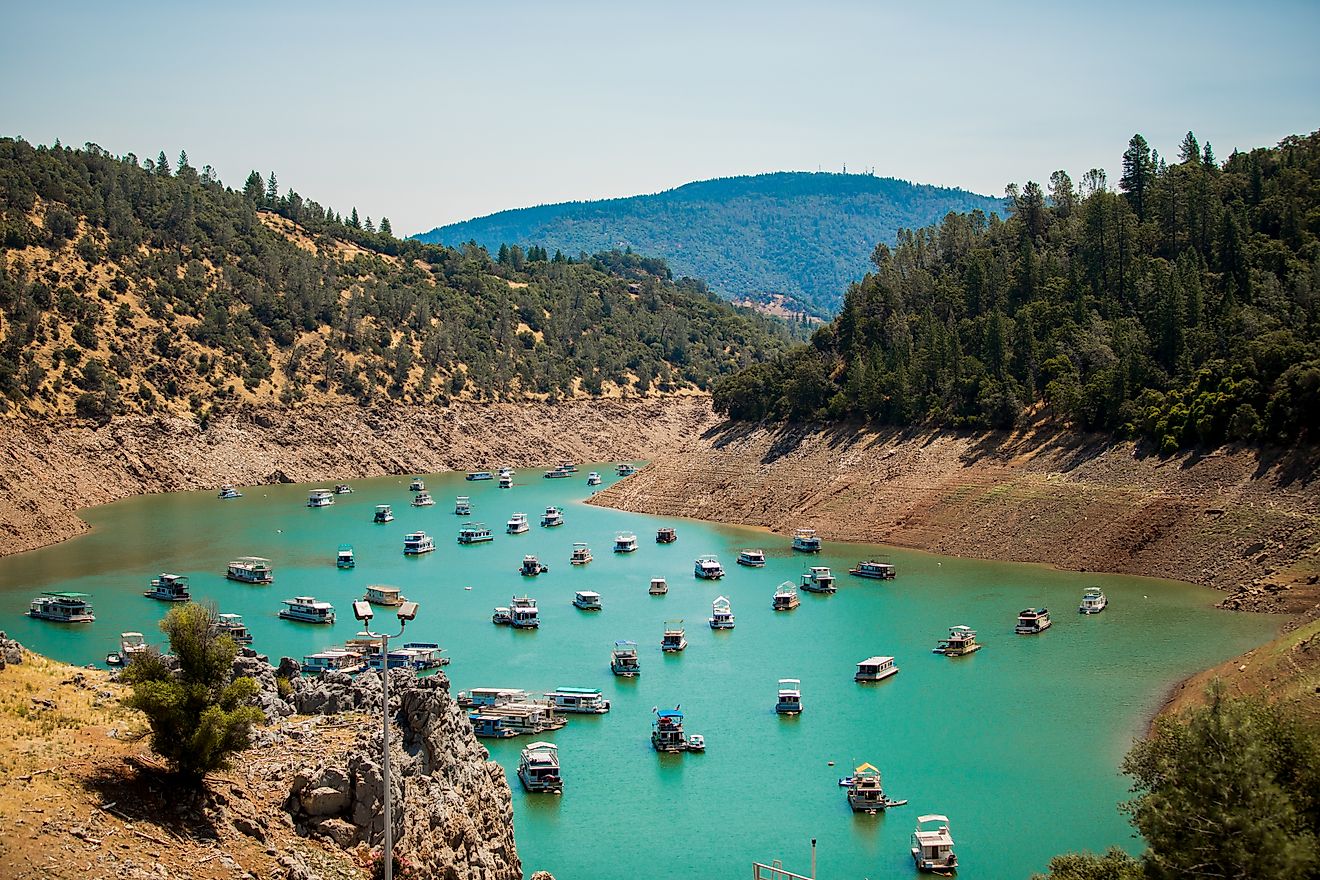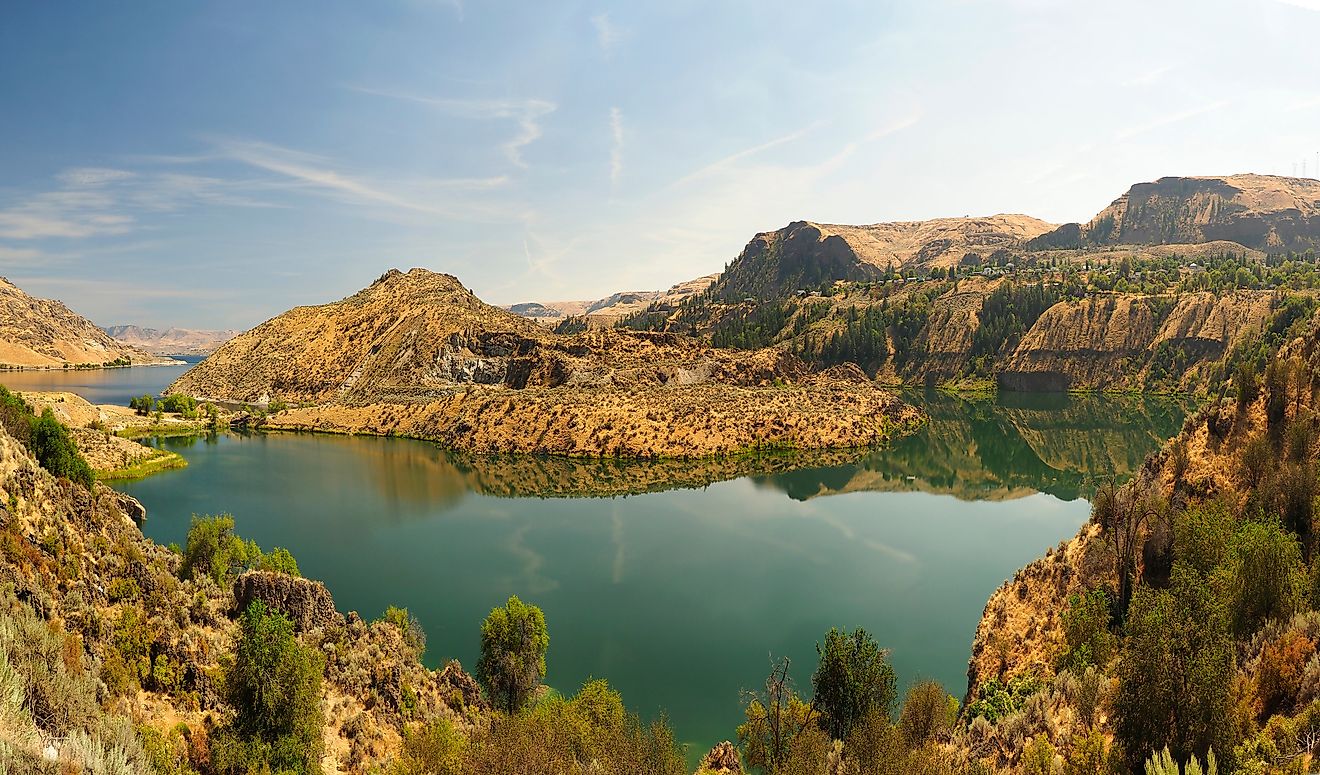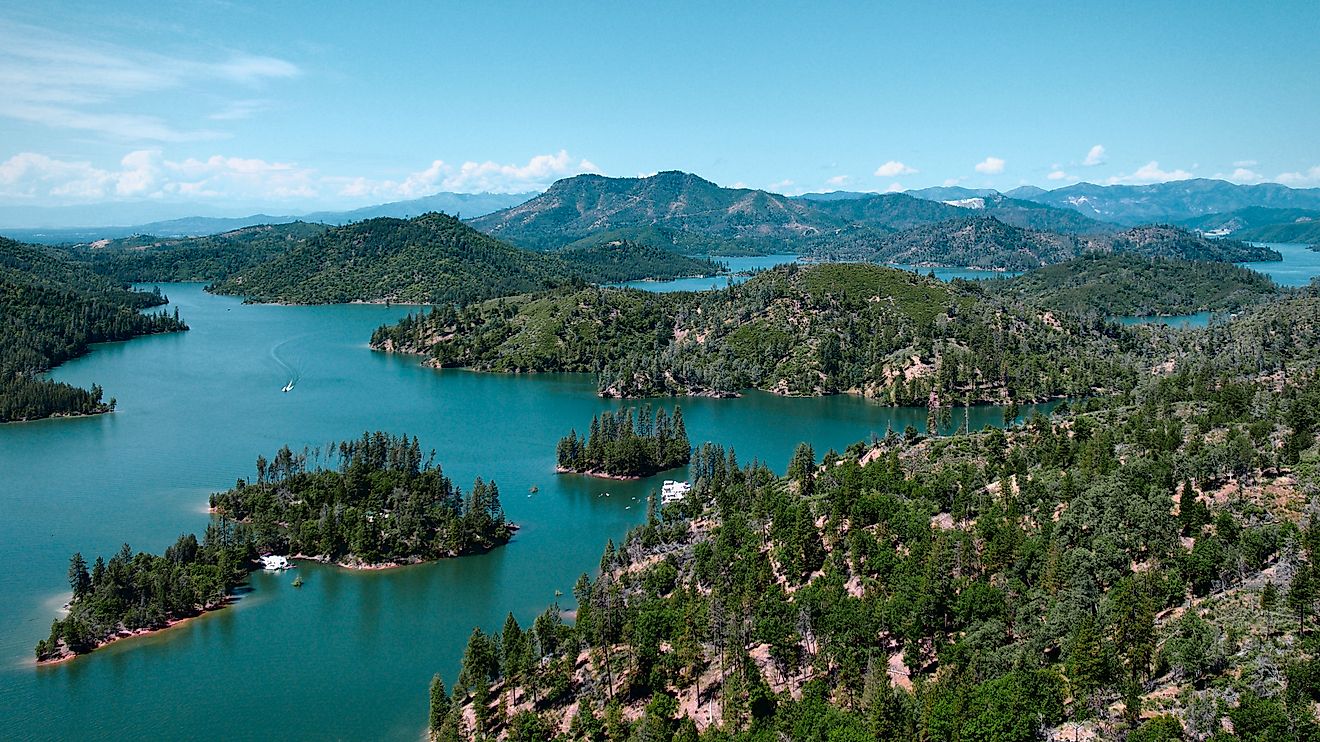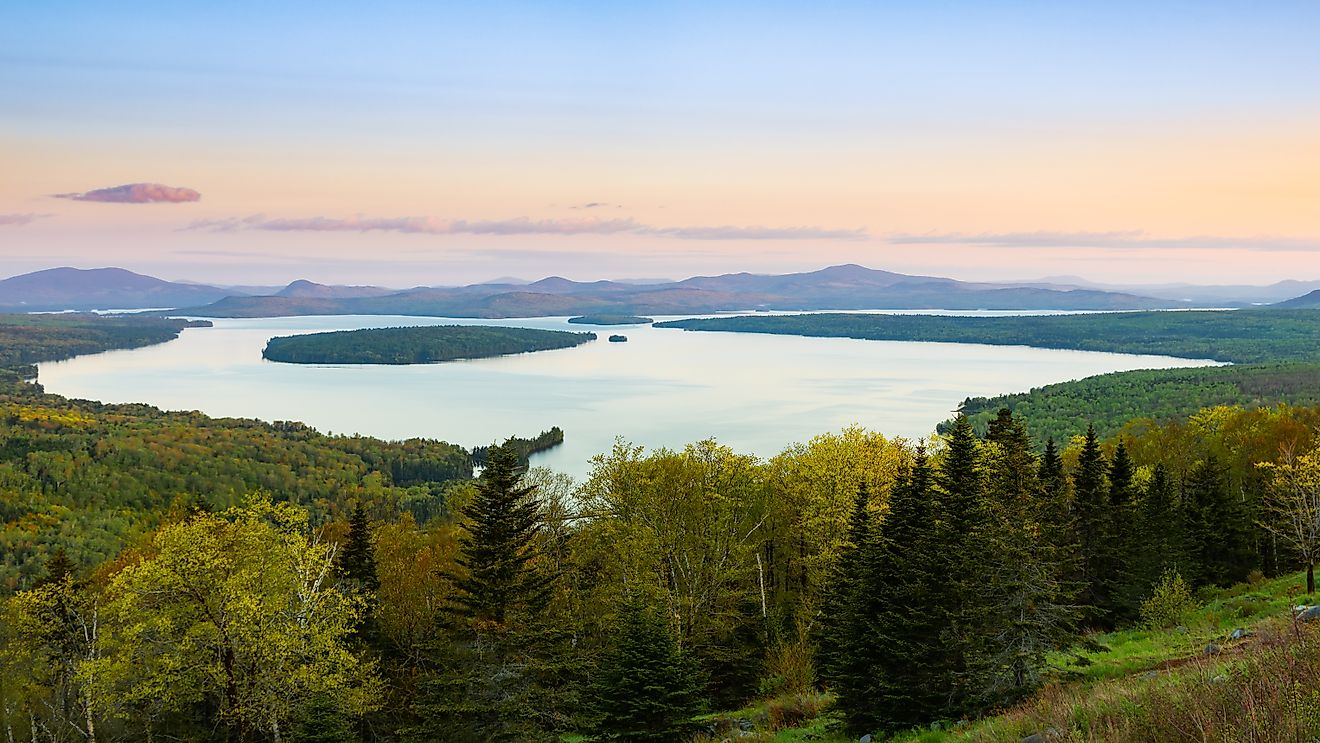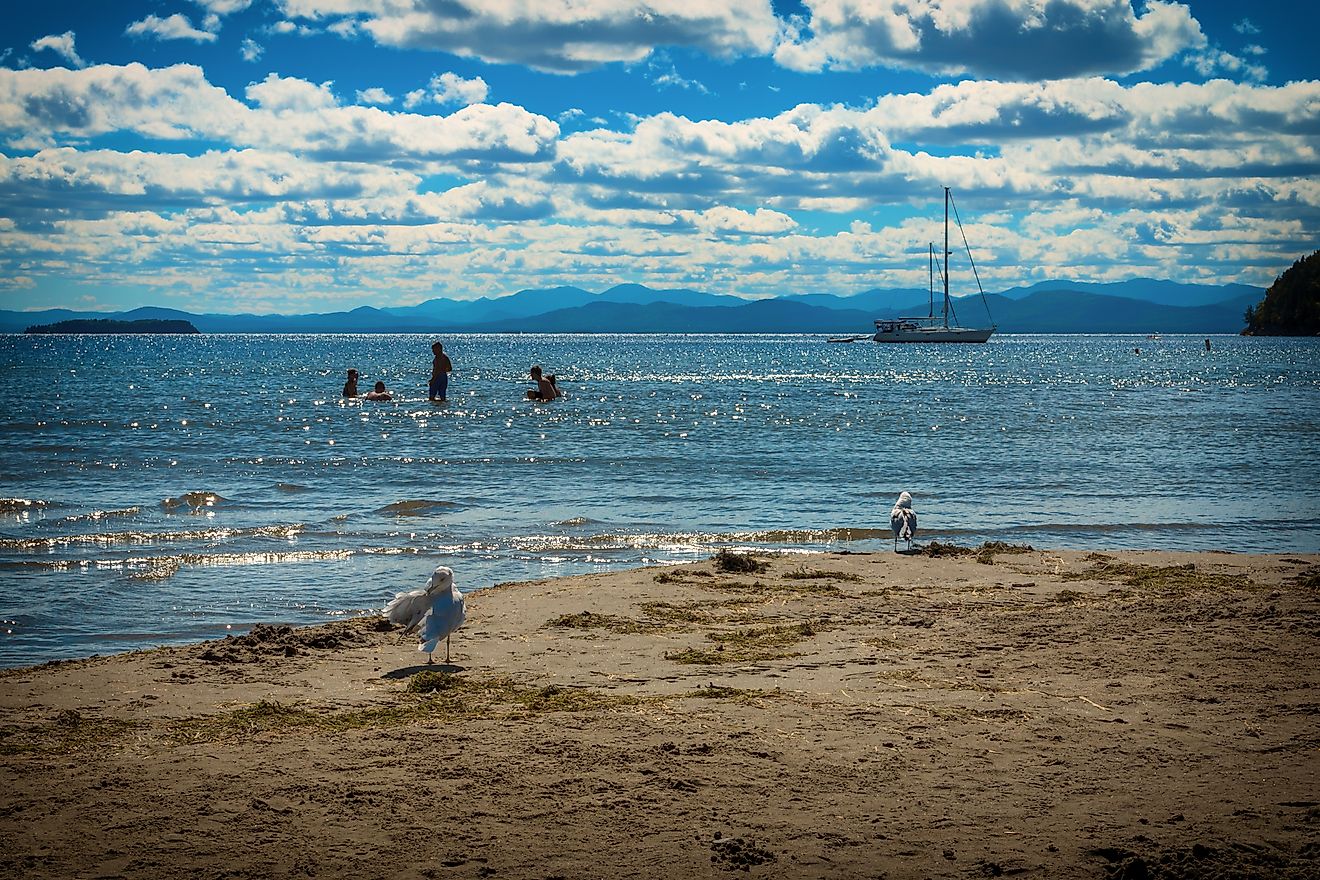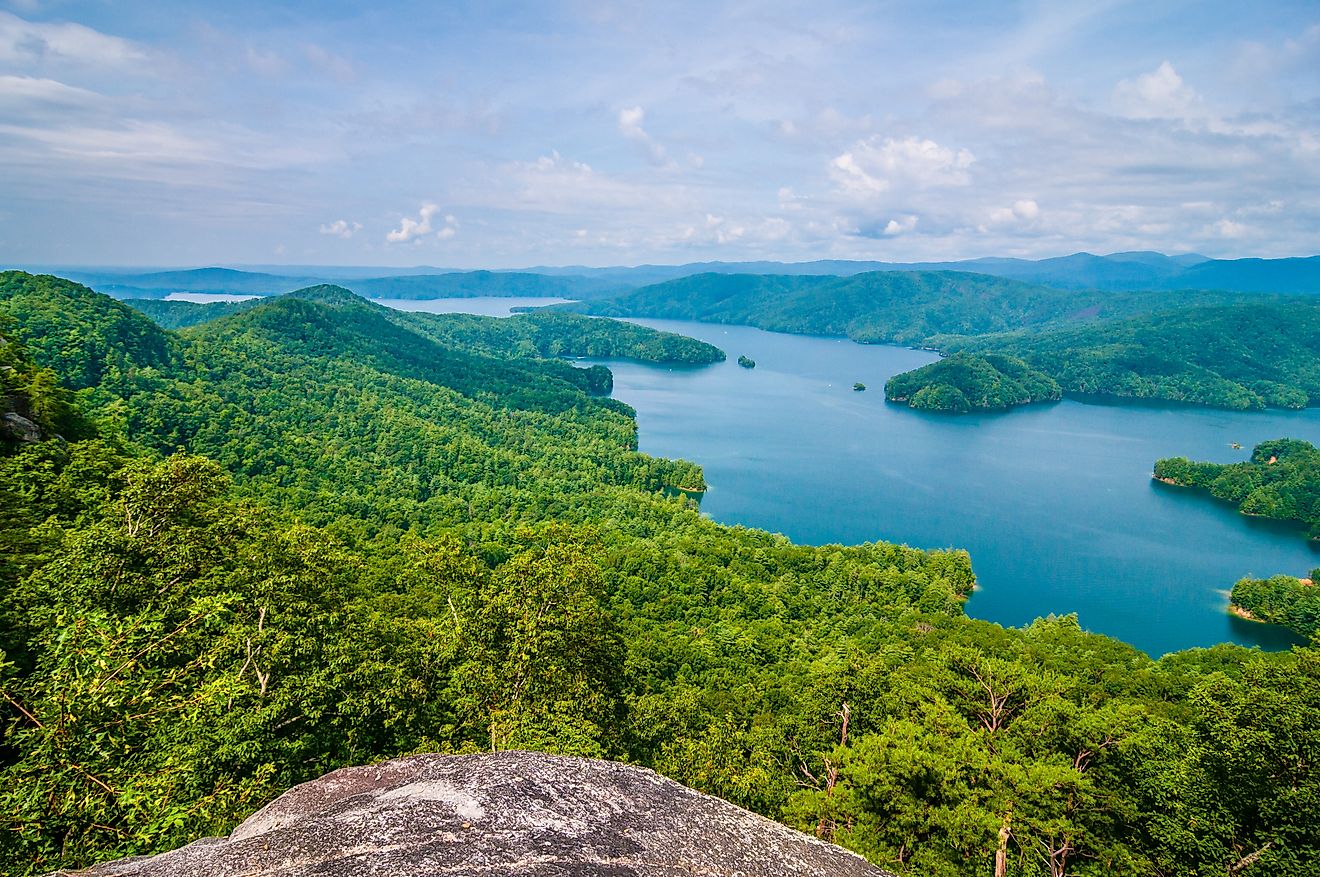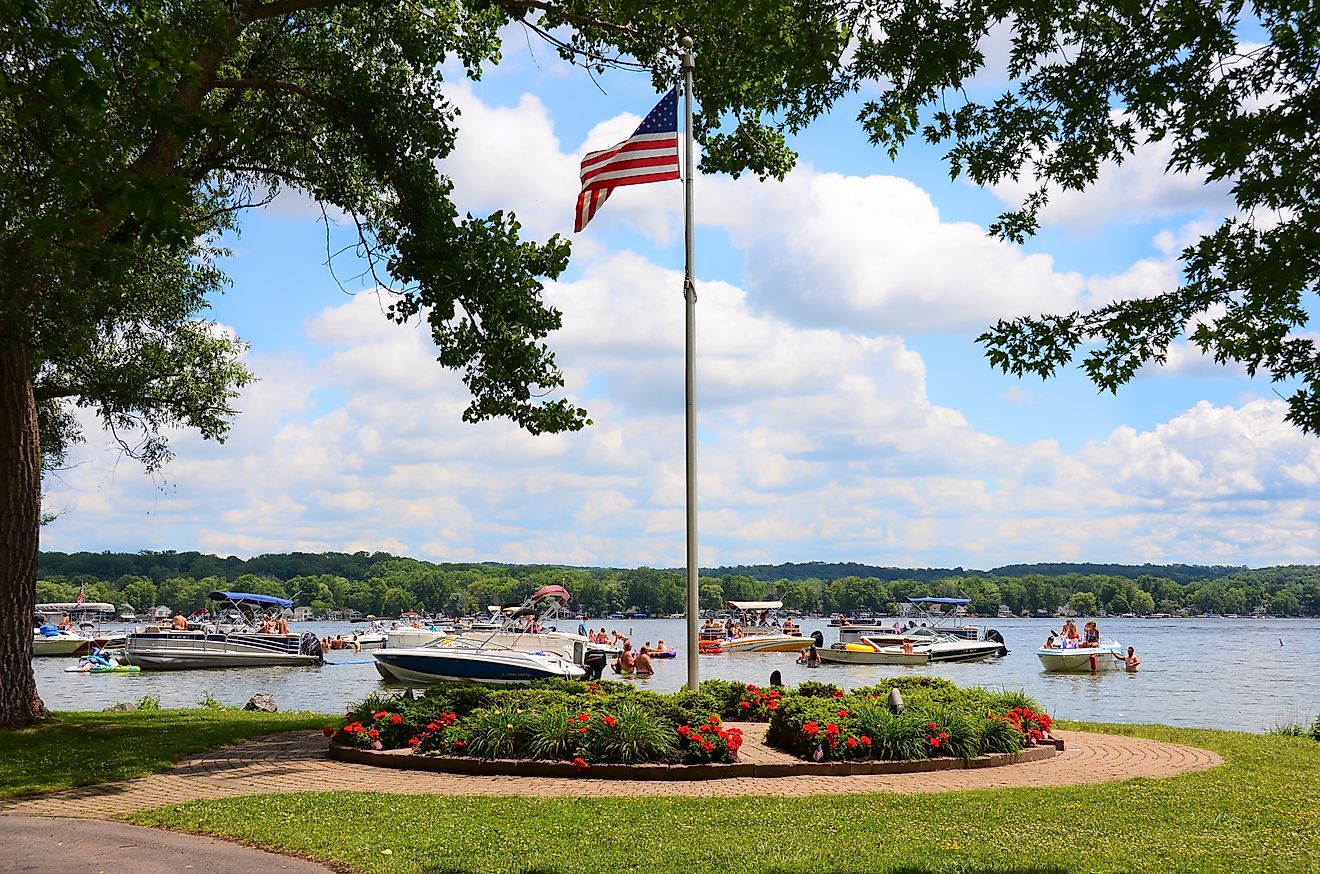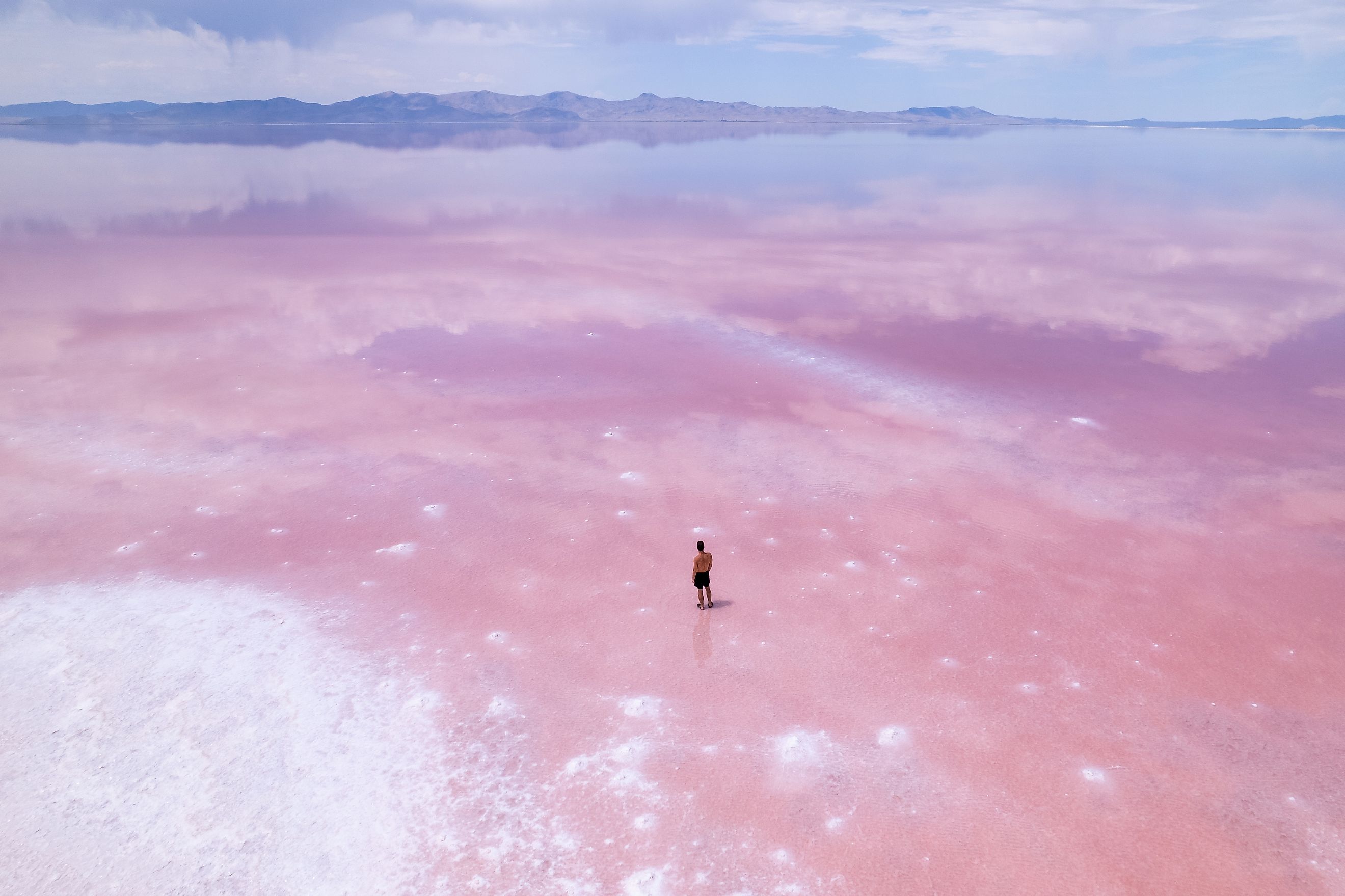
The US Lake That Turns Bright Pink Every Summer
Every summer, an otherworldly transformation takes place in northern Utah. As temperatures rise and water levels drop, a portion of the Great Salt Lake, the largest saltwater lake in the Western Hemisphere, blushes into a vibrant, almost neon pink. It’s a surreal sight—one that draws photographers, curious travelers, and science buffs from around the world.
So what causes this massive body of water to shift into such a striking color palette? And when exactly can you see it? Let’s dive into the science, scenery, and magic behind America’s most colorful lake.
Where Is This Mysterious Pink Lake?
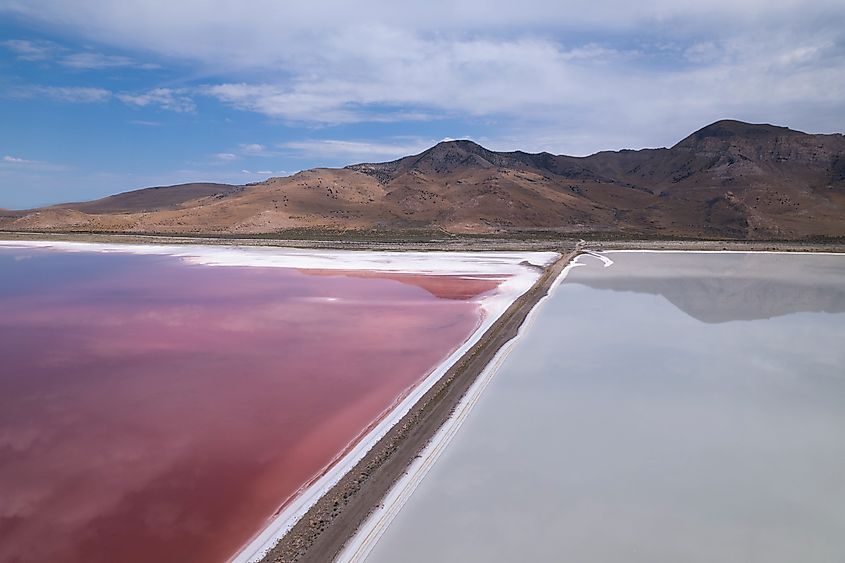
The Great Salt Lake stretches across a vast expanse of northern Utah, just west of Salt Lake City. It’s a remnant of the prehistoric Lake Bonneville, a massive inland sea that once covered much of the Great Basin. Today, the lake covers roughly 1,700 square miles, though its size and depth fluctuate wildly with rainfall and drought cycles.
But not all of the lake turns pink—only the northern arm, also known as Gunnison Bay. This section is famously divided from the southern arm by a causeway built by the Southern Pacific Railroad in the 1950s. That causeway isn’t just a transportation relic—it’s the reason this colorful transformation happens in the first place.
What Makes the Great Salt Lake Turn Pink?
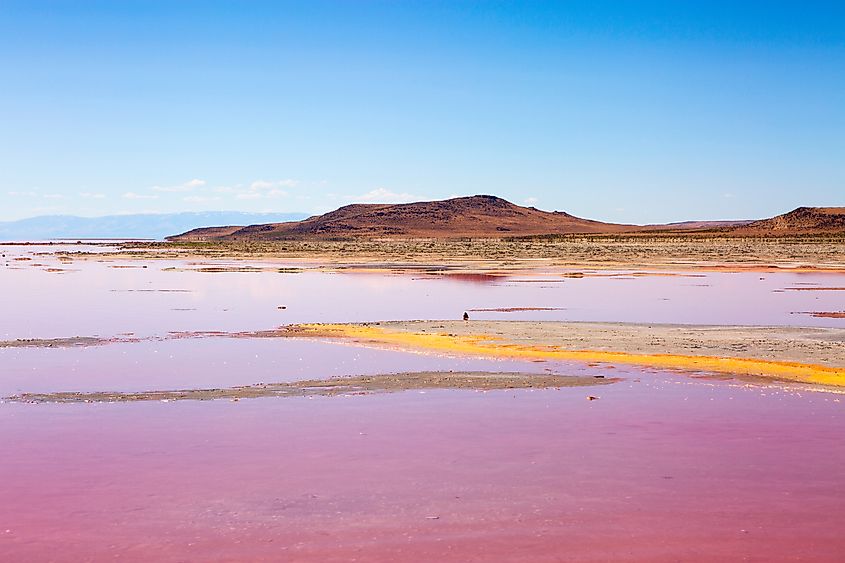
Let’s get scientific for a second. The northern arm of the Great Salt Lake is nearly cut off from freshwater inflows. As a result, it has extremely high salinity—even saltier than the Dead Sea. While the southern half gets occasional freshwater from rivers like the Jordan and Bear, the northern half is essentially a giant briny bowl.
This hypersaline environment isn’t just inhospitable to fish—it creates the perfect conditions for halophilic microorganisms, such as:
-
Dunaliella salina, a type of micro-algae that produces beta-carotene (the same pigment found in carrots).
-
Halobacterium, a group of salt-loving microbes that produce reddish-purple pigments known as bacterioruberin.
As summer heat ramps up evaporation, the water gets even saltier. When the salinity spikes, these organisms bloom and paint the lake in brilliant pinks, reds, and purples. The more intense the sun and the lower the water levels, the brighter the colors.
When Does the Lake Turn Pink?
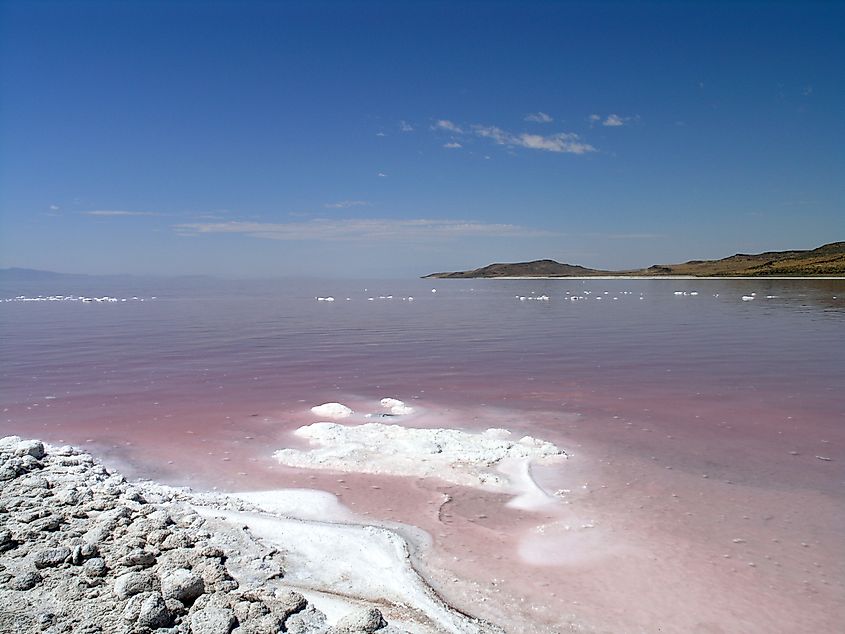
If you’re planning a trip, timing is everything. The lake’s pink phase typically hits its peak between late July and early October, when temperatures soar and speed up evaporation, salinity reaches its annual high point, and microbial populations explode, saturating the lake with natural pigments.
The exact timing can vary year to year depending on snowfall, rainfall, and overall climate patterns. For example, a wet winter can delay or dull the pink effect. In drought years, the transformation happens earlier and appears more vivid.
To see the pink hue at its brightest, aim for August or September during a dry, sunny spell.
Best Places to See the Pink Lake

You can’t just show up anywhere along the lake and expect to see the cotton-candy colors. Most of the pink action happens in the northern section, specifically Gunnison Bay.
Here are the top spots to witness the magic:
Spiral Jetty
Perhaps the most iconic location, this earthwork sculpture by artist Robert Smithson juts into the northern lake like a stone spiral staircase. It’s not just a work of art—it’s also one of the best viewpoints for the pink lake. Located off Rozel Point Road, the site is roughly a 2.5-hour drive northwest of Salt Lake City.
Visitors should be prepared for dusty, unpaved roads. On sunny summer days, the view from Spiral Jetty can be downright psychedelic—the contrast between the pink water, white salt crust, and black lava rocks is truly unreal.
Stansbury Island
Though not technically an island anymore (thanks to land bridges), this rocky spot on the lake’s southern edge often offers peekaboo views of pinkish patches, especially during dry summers.
From the Air
Some of the most dramatic views come from above. If you’re flying into Salt Lake City International Airport, snag a window seat on the right side of the plane for a chance to glimpse the colorful lake from the sky.
Drone photography is popular around Spiral Jetty, but be sure to follow FAA guidelines and avoid disturbing wildlife.
Is It Safe to Visit or Swim In?
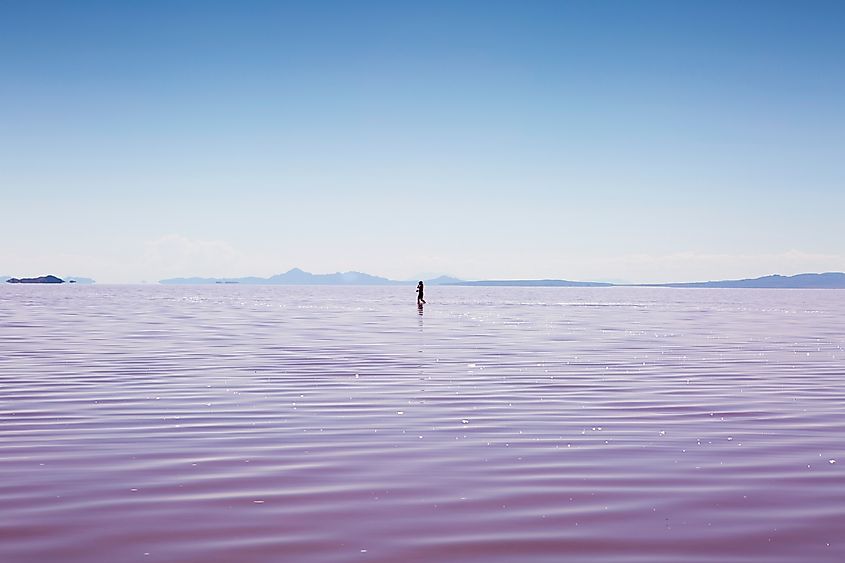
Yes and no.
You can absolutely visit the pink portions of the lake—especially around Spiral Jetty and nearby public lands. However, there’s no official infrastructure, so bring water, snacks, and sun protection. Cell service is spotty, and conditions can get harsh in the summer sun.
As for swimming, it’s technically possible, but not particularly pleasant. The hypersaline water is much denser than the ocean—you’ll float effortlessly, but the salty slime can sting cuts and dry out skin fast. Also, there are no lifeguards, no facilities, and the shoreline is often covered in mud, brine flies, or salt crusts.
Pro tip: Visit for the photos, not for a dip.
A History of Color and Controversy
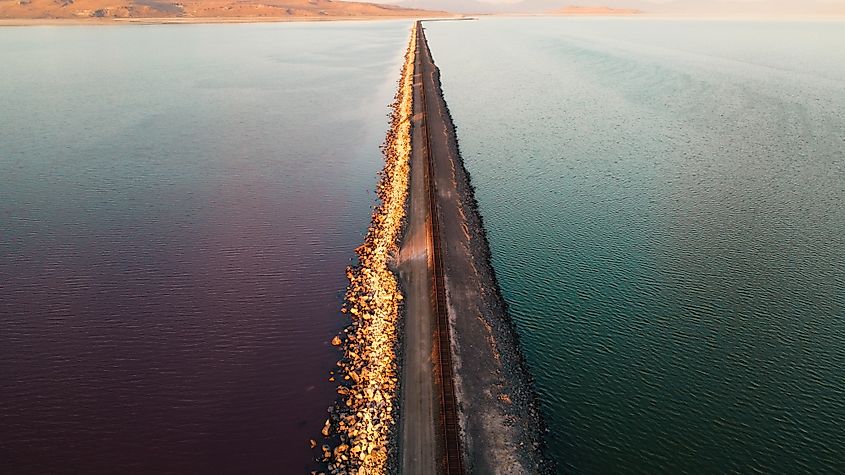
The pink transformation isn’t new. Indigenous tribes who lived in the area long before settlers arrived likely witnessed the lake’s changing hues. But it wasn’t until the construction of the railroad causeway in 1959 that the lake began to show dramatic differences in color between the north and south arms.
Originally, culverts in the causeway allowed some water to pass through. But as those closed over time, the northern arm became increasingly isolated, leading to a super-concentrated brine environment.
In 2016, a 180-foot breach was cut into the causeway to restore some water flow and reduce salinity extremes. This project aimed to improve lake health—but it also changed the color dynamics. In recent years, observers have noted some fading of the pink tones depending on water levels and seasonal runoff.
In 2022 and 2023, Utah’s record-breaking drought caused the lake to hit historically low levels, intensifying salinity and producing some of the most vibrant pinks in recent memory.
Ecological Importance
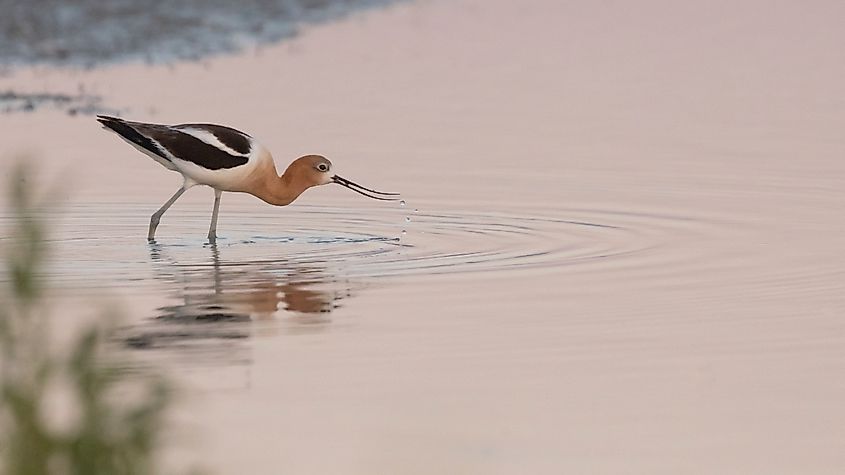
Beyond its Instagram appeal, the Great Salt Lake is a critical ecological habitat. The pink-loving microorganisms aren’t just for show—they feed the brine shrimp, which in turn support millions of migratory birds, including American avocets, Wilson’s phalaropes, Eared grebes, and Snowy plovers. In fact, the lake is one of the most important stopover points on the Pacific Flyway, a major bird migration route.
In recent years, scientists and environmentalists have raised alarms about declining water levels. If inflows continue to drop due to drought and upstream water diversion, the lake could shrink further, endangering both its pink magic and its biodiversity.
Fun Facts About the Pink Lake
-
The northern arm can be up to 10 times saltier than the ocean.
-
The lake has been featured in music videos, sci-fi films, and even NASA studies.
-
Artist Robert Smithson’s Spiral Jetty vanishes and reappears depending on water levels.
-
Some scientists study the lake’s microbes as analogs for life on Mars.
-
Brine shrimp eggs from the lake are harvested and sold globally as fish food.
Planning Your Visit
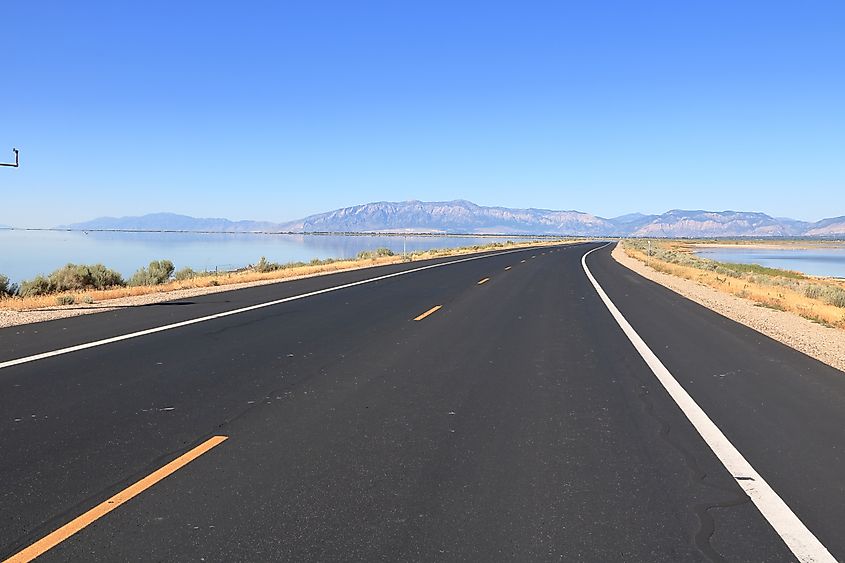
If you’re ready to make the trip, here’s how to do it right. The best time to visit is between late July and early October, when the lake is at its pinkest. Try to avoid rainy periods, as overcast skies and runoff can dull the vibrant tones.
Come prepared with sunscreen and a hat—there’s little to no shade in the area. Bring plenty of water and snacks, since there are no facilities nearby. A camera or drone is a must for capturing the surreal scenery, and if you’re heading to Spiral Jetty, an all-terrain vehicle is highly recommended due to the rough roads.
To reach Spiral Jetty from Salt Lake City, take I-15 North to exit 365 toward Corinne. Head west through Corinne and follow the signs to Golden Spike National Historical Park. From there, continue west past the park on a dirt road for about 16 miles until you reach Spiral Jetty. Be sure to check road conditions before you go—heavy rain can make the dirt road difficult or even impassable.
A Natural Wonder That’s Anything But Ordinary
In a country filled with jaw-dropping landscapes, the pink arm of the Great Salt Lake stands out as a true oddity. It’s equal parts science experiment, ecological marvel, and Instagram dream. But more than that, it’s a vivid reminder of nature’s ability to surprise us—especially when left to its own chemistry.
The best part? This isn’t some remote, hard-to-reach destination. It’s just a few hours from Salt Lake City and totally doable as a weekend trip or quirky road trip stop.
So next time you’re looking for something off the beaten path—something unforgettable—head to northern Utah. The lake’s pink glow is waiting, and it’s unlike anything else in the United States.

